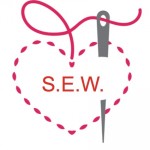Sirens blaring. The booming voice ominously repeating the warning to MOVE TO HIGHER GROUND IMMEDIATELY. The images on YouTube and TV of flooding and rescues and rushing water and ROAD CLOSURES and EVACUATION ORDERS.
My adrenaline goes up and my brain thinks there’s an emergency, I should do something. But–what? Oh, nothing, there’s nothing to do right now. Sit back down. Watch more images.
I found the whole experience to be quite compelling. I know about Reactive Brain and Narrow Focus and the unhealthy impact of an ongoing stress response. But I kept believing my mind–THERE IS SOMETHING TERRIBLY WRONG.
Now, of course there was, and is, something wrong for many people. Those who have lost their lives or their homes or their belongings. I know that is happening, and people are in the middle of all of that mess as I type these words.
But it was seeing the couple last night (on Skype, as everyone was warned to stay off of Boulder streets) that mirrored to me how I was letting myself be in the clutches of my own Narrow Focused brain.* They talked about escalating fights, about how one or the other would pick or was feeling picked on. They looked worn out and sounded completely frustrated. They’re smart, insightful, sensitive people, trying really hard to create a great relationship. And it was clear that their defensiveness with each other was building on itself, until someone exploded and the battle was on.
I asked them to commit to seeing each other as allies. This simple idea, created by Gay and Kathlyn Hendricks, is profound. There is fascinating research that supports their idea. It demonstrates how one of the very first things our brains code for is friend or foe. We watch, we notice, and once we’ve detected a foe, we’re on guard. We’re in Narrow Focus. We’re hypervigilant, watching every detail for more signs of danger. Seeing the other as an ally takes us in the opposite direction. Our bodies can relax into Open Focus, we can begin to feel loving and appreciative and remember why the heck we decided to hang around this person anyway.
Here’s the miracle. We can actually shift our brains from Narrow Focus to Open Focus. Each one of us has the ability, in any moment, to expand our vision, relax our bodies, and change our brain waves. With some very simple actions (widening our peripheral vision, noticing the space inside and out) we can move out of stressed-out high Beta waves into the deep relaxation of Alpha waves. What was all wrong can become all right, what was a problem shifts to a possibility. And, before our very eyes, our enemy transforms back into our beloved.
The challenge is to stop believing our minds. Not easy, as I just discovered (again. For about the millionth time.) Sirens and booming loudspeaker voices are designed to activate our Reactive Brains and Narrow Focus, get us to see what the problem is and take instant action. News people are paid to tell the best, most dramatic story–even if it means running the same footage over and over–so that our hearts start pumping and we keep watching. We have millenia of experience that orients us to survival first, open hearts later. And–
I recommit to seeing you all, even this crazy, Biblically-proportioned universe, as my ally.
*”Narrow Focus” is a term coined by Les Fehmi. His book, The Open Focus Brain, is a must-read.















